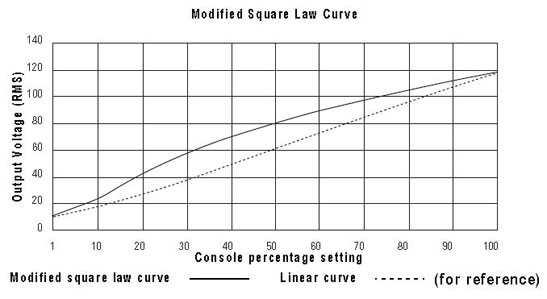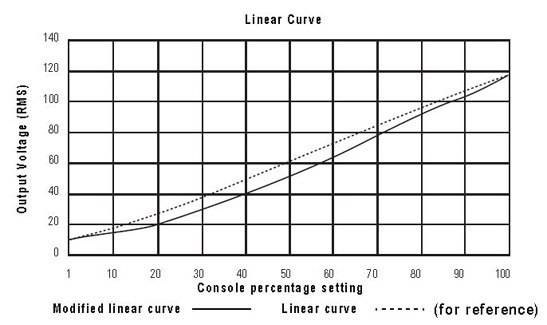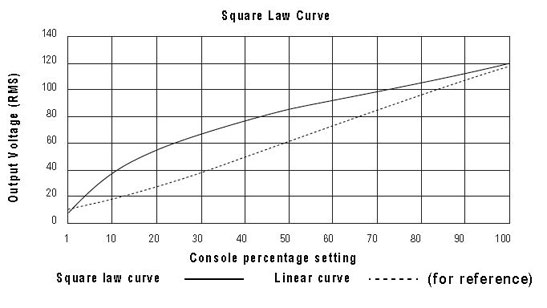Dimmer Curves
Linear curve
The linear curve matches the control input percentage to Root Mean Squared (RMS) voltage output. Each percent increase in control level increases dimmer voltage output by the same amount.

Modified linear curve
A modified linear curve reduces the voltage change at low control levels for better performance in low-wattage fixtures.
Square law curve
At low control levels, much of a traditional incandescent fixture's light output is in the invisible infrared spectrum. This results in poor visible response to low control levels. A square law curve applies a multiple derived from the square root of the control level (with full output equal to 1.00) to increase voltage response at low control levels to compensate for the infrared loss.
Modified Square law curve
A standard square law curve may overcompensate for infrared loss, resulting in "steppy" response to incremental control changes at low levels. ETC's modified square law curve applies a second multiple to the standard square law curve for more uniform response to control level changes across the entire range of dimmer output.

Sensor 2.0 curve
The Sensor 2.0 curve is the previous version of ETC's modified square law curve. It provides backwards compatibility for shows created using earlier versions of ETC equipment and familiar response for designers who prefer the earlier version.



